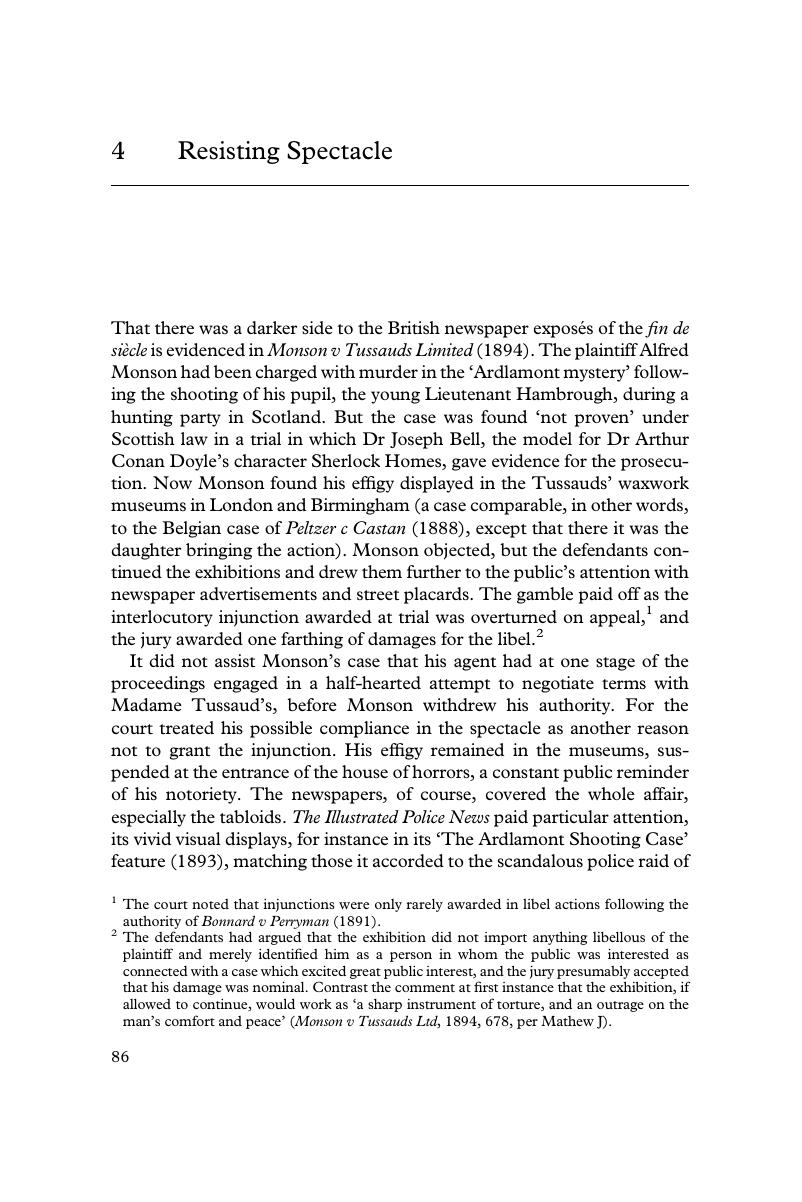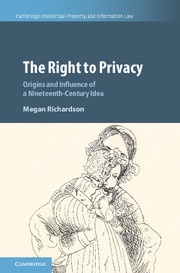Book contents
- The Right to Privacy
- Cambridge Intellectual Property and Information Law
- The Right to Privacy
- Copyright page
- Dedication
- Contents
- Illustrations
- Preface
- Acknowledgements
- Introduction
- 1 Authorship, Secrecy, Privacy
- 2 Creative Self-fashioning
- 3 Intimate Images
- 4 Resisting Spectacle
- 5 Make It New!
- Appendix: Documentation
- Index
- Cambridge Intellectual Property and Information Law
- References
4 - Resisting Spectacle
Published online by Cambridge University Press: 28 September 2017
- The Right to Privacy
- Cambridge Intellectual Property and Information Law
- The Right to Privacy
- Copyright page
- Dedication
- Contents
- Illustrations
- Preface
- Acknowledgements
- Introduction
- 1 Authorship, Secrecy, Privacy
- 2 Creative Self-fashioning
- 3 Intimate Images
- 4 Resisting Spectacle
- 5 Make It New!
- Appendix: Documentation
- Index
- Cambridge Intellectual Property and Information Law
- References
Summary

- Type
- Chapter
- Information
- The Right to PrivacyOrigins and Influence of a Nineteenth-Century Idea, pp. 62 - 85Publisher: Cambridge University PressPrint publication year: 2017



